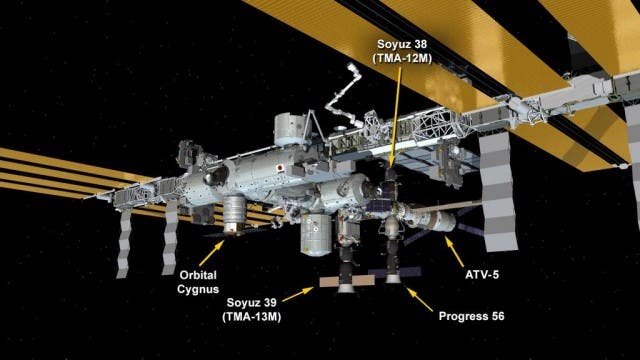
At this very moment, the International Space Station has all its docking ports fully booked, as five manned and cargo spacecraft have occupied all available slots.
Most expensive parking ticket ever
The spacecrafts in question are: Soyuz TMA-12M, Soyuz TMA-13M, Cygnus 2, Progress 56, and ATV-5. The Soyuz crafts are tasked with ferrying the crew of Expedition 39/40 and 40/41 to and from Earth, while the other three are unmanned cargo vessels. Of these, Cygnus is most notable, not because of any technical achievement (it’s quite obsolete, if you ask me), but because it’s the only one owned by a private company. Cygnus is only the second space company, besides SpaceX, ever to pin a contract with NASA to deliver cargo to the ISS. However, while the Dragon capsule showed how important and useful a reusable craft can be on the long run, the Cygnus 2 can only deliver 2,000 kilos (4,400 lbs) in space, before plummeting in the Earth’s atmosphere to burn and perish. Elon Musk and his crew at SpaceX understand fully well that for space ventures to become lucrative, they need to reuse crafts and rockets as much as possible. Contrary, Cygnus 2 looks like high tech trash bin – it is, while else would they just throw it down the atmospherE?
ATV-5 is a monster owned by the European Space Agency capable of delivering a payload of up to 7,700 kilos (17,000 lbs) in space. It too, however, lacks atmospheric re-entry capabilities and is sent out to be obliterated.
The ISS, isn’t fully out of parking space. It still has two more free docking stations, PMA-2 and PMA-3 (Pressurized Mating Adapter), but these could be used only by NASA’s shuttle. As the program was discontinued a few years ago the stations now lie useless. Not for too long, hopefully. One of the many companies battling to land the first private manned mission to the ISS ( realistically, Boeing’s CST-100 or SpaceX’s Dragon V2) will get the chance to use one of these ports.






